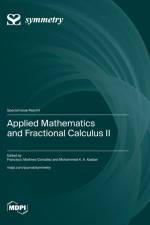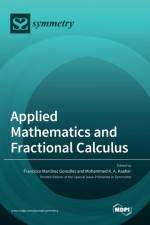av Mohammed K. A. Kaabar
1 147
In the last three decades, fractional calculus has broken into the field of mathematical analysis, both at the theoretical level and the level of its applications. In essence, the fractional calculus theory is a mathematical analysis tool applied to studying integrals and derivatives of arbitrary order, which unifies and generalizes the classical notions of differentiation and integration. These fractional and derivative integrals, which until a few years ago had been used in purely mathematical contexts, have been revealed as instruments with great potential to model problems in various scientific fields, such as fluid mechanics, viscoelasticity, physics, biology, chemistry, dynamical systems, signal processing, and entropy theory. Since fractional order's differential and integral operators are nonlinear operators, fractional calculus theory provides a tool for modeling physical processes, which in many cases is more useful than classical formulations; this is why applying fractional calculus theory has become a focus of international academic research. This Special Issue, "Applied Mathematics and Fractional Calculus II," has published excellent research studies in the field of applied mathematics and fractional calculus, authored by many well-known mathematicians and scientists from diverse countries worldwide, such as the USA, Ireland, Romania, Bulgaria, Türkiye, China, Pakistan, Iran, Egypt, India, Iraq, and Saudi Arabia.


